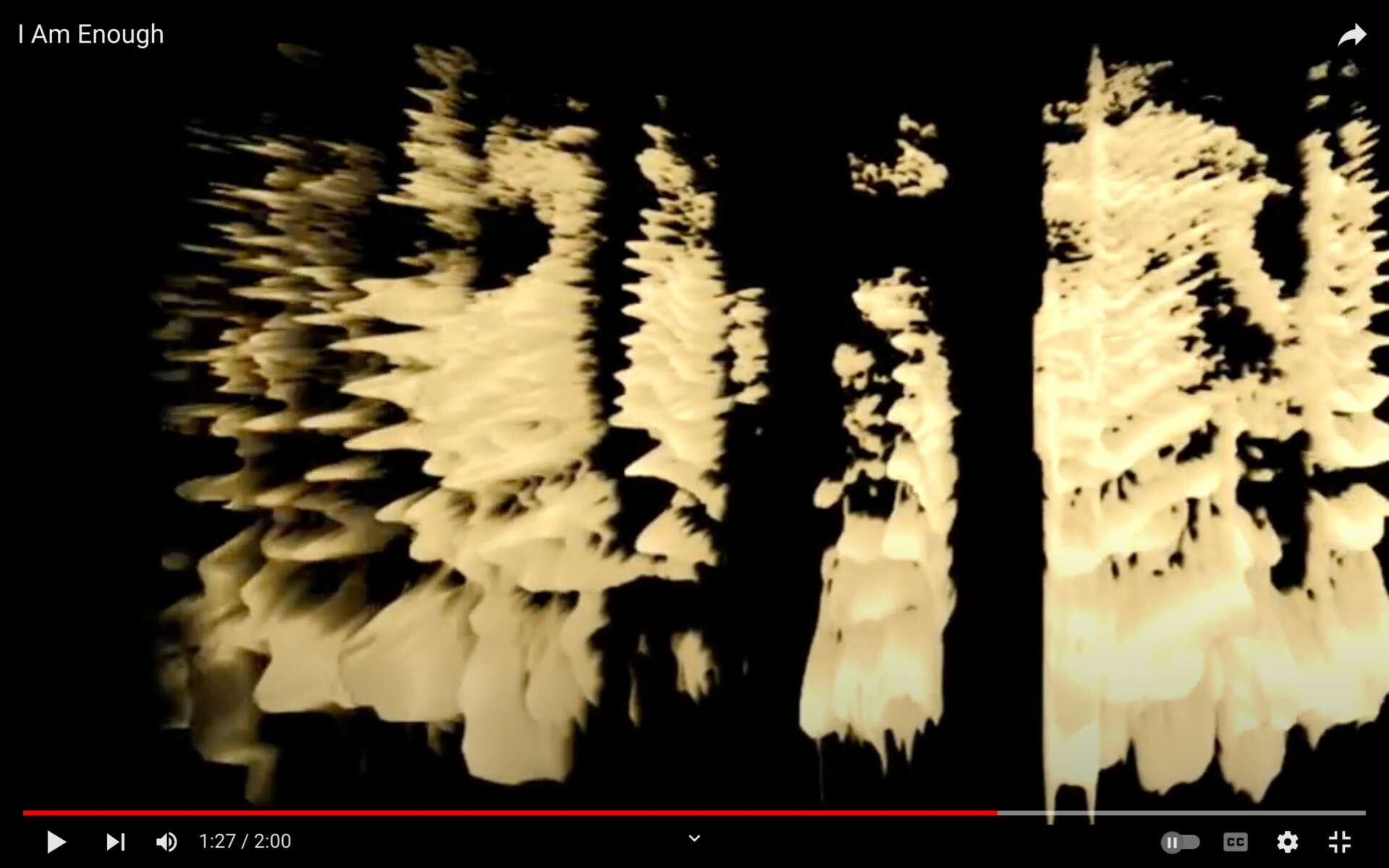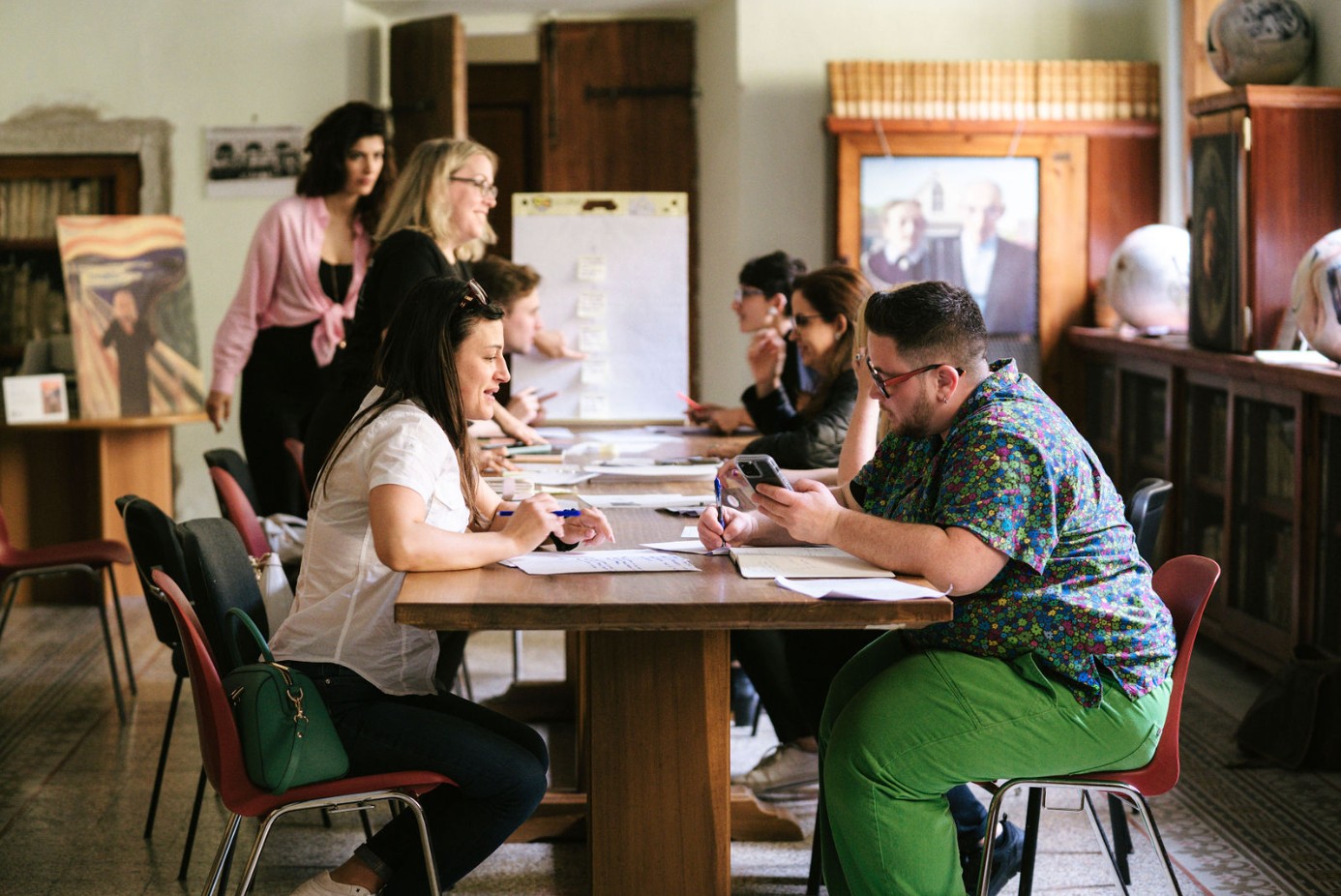We caught up with the brilliant and insightful Amanda Suckow a few weeks ago and have shared our conversation below.
Amanda, appreciate you joining us today. What’s been the most meaningful project you’ve worked on?
The most meaningful project I’ve worked on is a multimedia piece that explores my experience as a nonbinary, queer person navigating self-acceptance and healing. It all started one day, early in the pandemic, when I was out for a walk in my neighborhood. A stranger approached me, clearly confused by my appearance. They bluntly asked me, “What the f*ck are you?”
That question hurt because I didn’t have a clear answer. It poked at the isolation and dissociation I often felt about the intersection of my gender identity and society. I went home feeling shaken, retreating into unhealthy coping mechanisms like dissociative tinder hookups to distract from the pain.
But a shift was happening within me. I began reconnecting to my true self through practices like daily affirmations, therapy, and cat snuggles. I started living in my body, my queerness, my wholeness. Healing looked like tender self-love and acceptance.
I knew I needed to capture this complex journey raw and unapologetically. So, I created a multimedia piece with two simultaneous narratives spanning this transformation. The visuals show a texture marked and erased on the skin, representing the external labels. The audio pans back and forth between two narratives: the dissociative hookup on one side and the tender connection with myself on the other. I titled it “WTFRU” after that stranger’s blunt question. The soundscape includes two vocal narratives, vibraphone motifs distinct to each story, and dissonant violin harmonies.
This project allowed me to share my story with vulnerability and creativity. The overwhelmingly positive response showed me our voices matter and can connect us in our shared struggles and triumphs. WTFRU (parts 1 & 2) will always be one of my most meaningful works.


As always, we appreciate you sharing your insights and we’ve got a few more questions for you, but before we get to all of that can you take a minute to introduce yourself and give our readers some of your back background and context?
Circa 1988, I created an ‘all about me’ poster for kindergarten. It covered topics such as things I liked (Barbie, pie, and fish sticks), things I didn’t like (cigarettes, salad, and beans), and what I wanted to be when I grew up (an artist and a teacher).
However, in 7th grade, a pivot occurred when my art teacher, Mrs. Smith, delivered a personality critique that led me to shift my focus from being an artist to pursuing a career in music education. The words “Amanda, you are annoying” channeled my passion into studying violin and teaching, eventually earning degrees in both.
I found my way back to creating and responding to visual art when I partnered with a visual arts teacher colleague to be part of a 2-year fellowship at Intuit: Center for Intuitive and Outsider Art. I was inspired to create as we studied the art of makers such as Mr. Imagination, Della Wells, and Judith Scott. Through this fellowship, we integrated visual arts with music, exploring the visual representation of rhythm and the connection between visible lines and melodic contour.
With over 20 years of teaching music in diverse settings, I currently serve as the music content specialist for a large school district. Still enjoying pie, disliking cigarettes, and aspiring to be both an artist and a teacher, I impact the education of 300k+ students. My role involves designing, facilitating, and evaluating professional learning for arts teachers and collaborating with exceptional practitioners who inspire continuous learning.
As a district leader, I sought to enhance my systems-level thinking and problem-solving skills. In 2022, I learned of the Global Leaders Institute. I found the MBA program in Arts Innovation to provide the perfect opportunity to boost my leadership capacity and delve into teaching artistry—filling the gaps in business knowledge left by my music school education.
I thrive on creativity through strategic planning and innovative thinking tools in my day job. Aligned to this work, I am available for consulting, leading workshops, and presenting on the following topics:
-Innovative Problem Solving: Using What You Have
-Unleashing Creativity: How AI Can Amplify Imaginative Thinking
-Begin with the End in Mind: Unpacking Music Education Standards
-Varied Assessments: Improved Impact
-Supercharge Lesson Planning with AI
-Exploring Gender Identity Through Music Education
-Roadmap to Results: Crafting Strategic Plans for impact
-Inside the Box: Approaches for Innovative Problem Solving
-Fueling Leadership Development with Experiential Learning
-Designing Learner-Centered Classrooms: Principles for Engagement
-Assessment Beyond the Test: Portfolios that Showcase Growth
-Brave Space: Fostering Democratic Discourse (literacy, civics, innovation)
I explore found sounds in my artistic practice, creating soundscapes with story and visual design. Texture is my favorite element as I delve into addition and subtraction, preserving meaning in every layer. I am available for creative collaboration in sound design and storytelling.
I’m most proud of my ability to uplift others and find creative challenges to complex problems. Through my role as a content specialist, I aim to be the person I needed (while I was still in the classroom) for the 500 music educators in the district, engaging in creating that fosters meaningful dialogue.
My journey has been a blend of diverse experiences, but my core remains unchanged—I still cherish childlike play, strongly dislike cigarettes, and aspire to be both an artist and a change-maker.
My brand is built on passion, persistence, and a commitment to growth and curiosity. I invite potential clients, followers, collaborators, and fans to connect with me on LinkedIn and my new YouTube channel, Amanda Suckow’s Pedagogical Playlist.


We often hear about learning lessons – but just as important is unlearning lessons. Have you ever had to unlearn a lesson?
A lesson I had to unlearn was that I don’t deserve to take up space. Physically, I am a fat transgender person who has worn vests and jackets because I thought they hid the fact that I was fat. I tightened every muscle when riding on the bus, thinking that the clenching would make me take up less space. The physical manifestations of this core belief mirrored the emotional symptoms, such as not speaking up and pushing away kindness.
The tighter I clenched, the worse I reacted in stressful times. Like a fearful dog, I had a fierce bark. My bark showed up most often when driving: someone might not let me in and the next thing I knew, one of my fingers would fly outside the driver’s side window. As you would guess, growling at loved ones, bosses, colleagues, and strangers did not serve me well. Dealing with the consequences of the bark fueled a cycle of shame and regret that made me think I needed to be smaller.
Through therapy, aging, and good old practicing new habits, I now ‘enjoy-ish’ taking up space by sharing my contributions at work, wearing bright colors and patterns, and breathing deeply to allow my muscles to relax when I am in transit or feeling anxious. It isn’t always easy, but my psychological safety has increased each time I have had a positive experience with risk-taking. It helps that I report directly to someone who elevates my ideas, creates opportunities for me to lead, and provides me credit for my contributions.
Through my art, I share stories of my lived experiences, recognizing their uncertain impact on others. I aspire that encountering my work fosters change—thought, perspective, or action. For me, this hopeful transformation is an unapologetic assertion of taking up space.

What can society do to ensure an environment that’s helpful to artists and creatives?
Because of my background in arts education, I come from an education and training approach to how society can best support artists and artistry. One pursuit is educating young people, and the other is educating adults. We can support a thriving artistic ecosystem by
Promoting arts education from a young age
Provide accessible and affordable workshops, training programs, and mentorship opportunities for emerging artists.
Cultivate interdisciplinary education to encourage collaboration and a diverse skill set among young creatives.
We can further support creativity by increasing understanding of the benefits for adults in any context to engage in the arts. A powerful place to start is by reading the book “Making Change” by Eric Booth. This accessible text offers practice-based insights into the benefits of working with teaching artists in many contexts. Those benefits include but are not limited to holistic development, transferable skill development, cultural and social connection, and community building.
Some hot takes I have for shifts in arts education circles are:
Young people participating in the decision-making process about their works of art is as important as the final product they can display.
We do not need to save the arts; the arts will save us.
Creativity is less about thinking outside the box than finding ways to be resourceful with what is already in reach. Limitations yield creativity.
Any music program that requires a live accompanist, has a limited repertoire list, limited diversity of evaluators, lacks accessibility for times and approaches for auditions, etc., but has DEI language in its mission statement is hypocritical.

Contact Info:
- Linkedin: https://www.linkedin.com/in/asuckow/
- Youtube: @The_Pedagogic_Playlist
- Other: Calendly: https://calendly.com/amanda-suckow Linktree: https://linktr.ee/ASUCKOW
Image Credits
Kendall Hill & Damaride Arza


